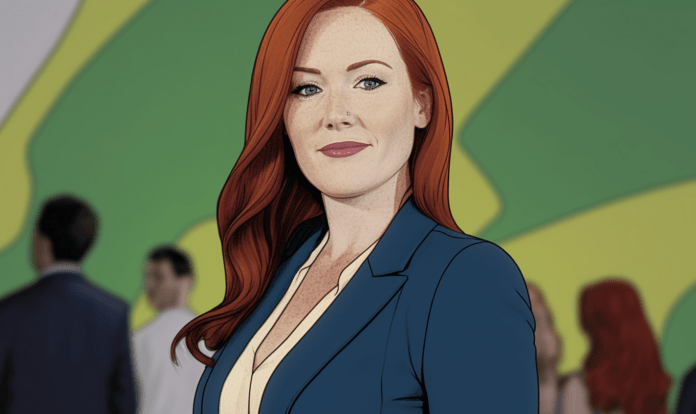Where jargon flows freely and acronyms rule the day, there exists a creature so elusive and enigmatic that it sends shivers down the spines of even the most seasoned ad tech experts. This creature, my friends, is known as Supply Path Optimization (SPO), and it’s a beast that’s been lurking in the shadows, ready to sink its teeth into the industry.
So, what the heck is SPO, you might ask? Well, grab your decoder rings and hold on tight, because we’re about to dive into the murky waters of this cannibalistic practice.
Imagine you’re a demand-side platform (DSP), navigating the treacherous jungle of supply-side platforms (SSPs). Each SSP has its own bag of tricks, its own secret handshake, and its own version of auction mechanics. It’s like a chaotic bazaar where everyone’s haggling for the best deal, but nobody’s speaking the same language.
Enter SPO, the algorithmic savior of the DSPs. It’s the GPS guiding them through this jungle, helping them pick the ripest fruits (or bids, in this case) while avoiding the rotten ones. Some DSPs use SPO to cherry-pick the most promising bids, while others use it to cut ties with SSPs that don’t play by the rules. It’s survival of the fittest in the ad tech wilderness.
Why SPO Matters
Now, you might wonder why DSPs are so obsessed with SPO. Well, there are two big reasons. First, there’s the issue of bid duplication. In this wild, wild west of digital advertising, bids are flying around like mosquitoes on a summer night. SPO helps DSPs avoid duplicating their bids, saving them from overcommitting their resources.
Second, it’s all about the auction mechanisms used by SSPs. You see, not all SSPs play by the same rules. Some use second-price auctions, where the highest bidder pays the second-highest bid price. But others have their own secret sauce, and the result is an unholy mishmash of auction methods.
In the grand game of thrones that is the ad tech industry, SPO has become a weapon of choice. Media buyers are demanding precision targeting, even as the old ways of doing things crumble like a castle under siege. It’s a battle for dominance, a scramble for the Iron Throne of ad tech supremacy.
Havas Media Group, in its quest for ad tech partners, has slashed its roster of SSP partners from a staggering 42 down to a mere handful. It’s a sign of the times, a signal that the industry is undergoing a seismic shift.
Who’s Eating Whose Lunch?
There’s a feeling in the air that DSPs are out to devour the lunches of SSPs. It’s a game of cat and mouse, where both sides are trying to outsmart each other. But who will come out on top in this high-stakes showdown?
At the heart of this intrigue lies “data activation,” the ability for HMG’s clients to target audiences on PubMatic’s inventory without relying on those pesky third-party cookies. It’s a dance of data and identifiers, a tango of targeting in the digital age.
But SPO is just one battlefield in the war for dominance in programmatic advertising. The industry is witnessing the rise of disintermediation, the act of cutting out the middlemen. Three musketeers have emerged in this grand scheme: GroupM, The Trade Desk (TTD), and Magnite.
GroupM has thrown its hat into the ring with the GroupM Premium Marketplace. It’s a bid to bring order to the chaos, to centralize control in a fragmented landscape. By partnering with Magnite and Pubmatic, GroupM aims to streamline media buying, negotiate better rates, and optimize the supply chain. It’s a bid to remain relevant in an era where advertisers are exploring in-house programmatic options.
The Trade Desk, on the other hand, has unleashed OpenPath, a direct bidding solution that bypasses SSPs. It’s a bold move that threatens to disrupt the SSP business model by eliminating intermediaries and reducing costs for advertisers.
Meanwhile, Magnite has its sights set on premium video with ClearLine. With acquisitions like SpotX and SpringServe under its belt, Magnite is positioning itself as a player in programmatic guaranteed (PG) deals. It’s all about maximizing spend on working media and simplifying the relationship between sellers and agencies.
The Disintermediation Dilemma
The rise of these products raises a critical question: Is disintermediation intentional, or is it merely a consequence of logical business decisions? The answer is likely somewhere in between. While these products aim to streamline processes and reduce intermediaries, they also offer value to both buyers and sellers.
These developments in programmatic advertising may not lead to an immediate industry collapse, but they signify a significant shift in how advertising transactions are conducted. Publishers and advertisers should seize these trends to negotiate favorable terms and ensure efficient supply paths.
In this ever-evolving landscape, adaptability is the name of the game. Those who embrace change and find opportunities within it will thrive in the dynamic and competitive world of programmatic advertising.
The Dance of DSPs and SSPs
In the complex tango between DSPs and SSPs, it’s not about going around each other; it’s about creating an ecosystem that ensures success in the future. Automation, transparency, and efficiency are the key moves on this dance floor.
As the industry wrestles with supply chain complexities, transparency, and value, the role of intermediaries is under scrutiny. The programmatic advertising landscape is evolving rapidly, and the players who adapt to these changes will be the ones who emerge victorious.
In the end, it’s a game of survival, and only the fittest in the ad tech jungle will thrive. As SPO and disintermediation reshape the industry, one thing is certain:
The ad tech ecosystem is in for a wild ride, and no one knows where it will lead.





















